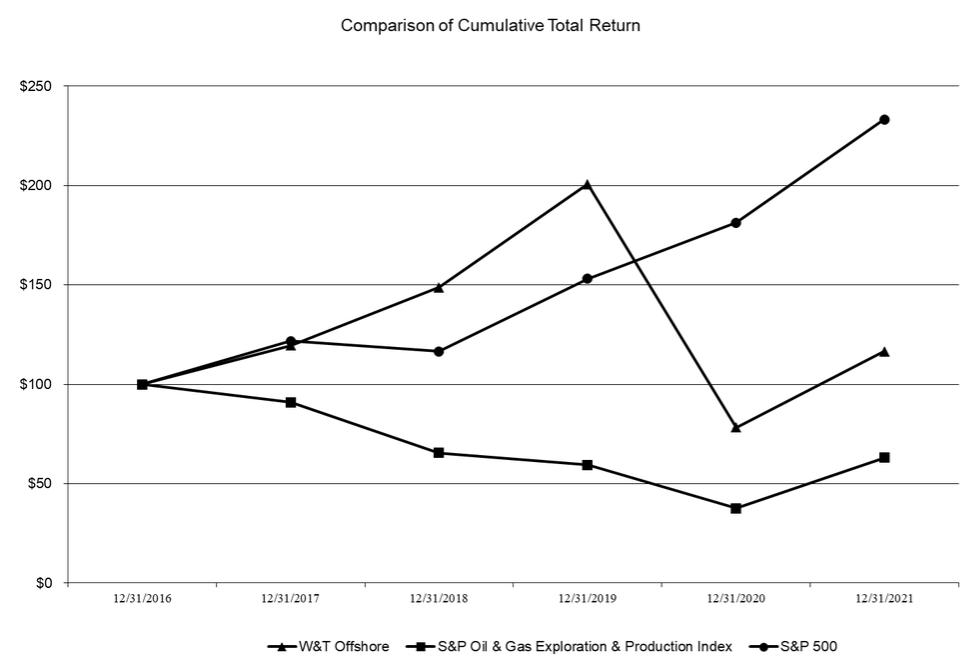and regardless of whether our operations met previous standards in the industry at the time they were conducted. Our permits require that we report any incidents that cause or could cause environmental damages.
New laws and regulations, amendment of existing laws and regulations, reinterpretation of legal requirements or increased governmental enforcement could significantly increase our capital expenditures and operating costs or could result in delays, limitations or cancelations to our exploration and production activities, which could have an adverse effect on our financial condition, results of operations, or cash flows. See Business – Compliance with Environmental Regulations under Part I, Item 1 in this Form 10-K for a more detailed description of our environmental, marine species, and endangered and threatened species regulations.
The threat of climate change could result in increased costs and reduced demand for the oil and natural gas we produce, which could have a material adverse effect on our business, results of operations, financial condition and cash flows.
The threat of climate change continues to attract considerable attention in the United States and foreign countries. As a result, numerous proposals have been made and are likely to continue to be made at the international, national, regional and state levels of government to monitor and limit emissions of GHGs as well as to eliminate such future emissions. As a result, our operations are subject to a series of regulatory, political and litigation and financial risks associated with the production and processing of fossil fuels and emission of GHGs. See Part I, Item 1. “Business – Compliance with Environmental Regulations” for more discussion on the threat of climate and restriction of GHG emissions. The adoption and implementation of any international, federal, regional or state legislation, executive actions, regulations or other regulatory initiatives that impose more stringent standards for GHG emissions on our operations or in areas where we produce oil and natural gas could result in increased compliance costs or costs of consuming fossil fuels, and thereby reduce demand for the oil and natural gas that we produce. Additionally, political, financial and litigation risks may result in us having to restrict, delay or cancel production activities, incur liability for infrastructure damages as a result of climatic changes, or impair the ability to continue to operate in an economic manner, which could have a material adverse effect on our business, financial condition, results of operations and cash flows. Increasing attention to climate change, increasing societal expectations on companies to address climate change, and potential customer use of substitutes to energy commodities may result in increased costs, reduced demand for oil and natural gas we produce, resulting in reduced profits, increased investigations and litigation, and negative impacts on our stock price and access to capital markets. Moreover, the increased competitiveness of alternative energy sources (such as wind, solar geothermal, tidal and biofuels) could reduce demand for the oil and natural gas we produce, which would lead to a reduction in our revenues. Finally, increasing concentrations of GHG in the Earth’s atmosphere may produce climate changes that have significant physical effects, such as increased frequency and severity of storms, droughts, floods, rising sea levels and other climatic events.
Increasing attention to Environmental, Social and Governance (“ESG”) matters may impact our business.
Increasing attention to climate change, societal expectations for companies to address climate change, investor and societal expectations regarding voluntary ESG disclosures, and consumer demand for alternative forms of energy may result in increased costs, reduced demand for the oil and natural gas we produce, reduced profits, increased risks of governmental investigations and private party litigation, and negative impacts on our stock price and access to capital markets. Increasing attention to climate change and environmental conservation, for example, may result in demand shifts from oil and natural gas products and bias against companies operating in the sector. To the extent that societal pressures or political or other factors are involved, it is possible that such liability could be imposed without regard to our causation of or contribution to the asserted damage, or to other mitigating factors.
We have established a managerial ESG Task Force composed of cross-functional management-level employees in Operations, HSE&R, Legal, Human Resources, Investor Relations, and Finance. This task force is responsible for overseeing and managing our ESG reporting initiatives and suggesting areas of focus to our executive management. Executive management in turn reports on those activities to the Board of Directors. Throughout 2021, we undertook several initiatives to improve our ESG performance. From an environmental perspective, we consolidated the gas processing operations for our Mobile Bay assets which lowered our greenhouse gas emissions related to the operation of those assets. On the social front, we instituted a company-wide diversity training program and tied completion of that program to our short-term compensation for the year. Relating to governance, we continued to assess
